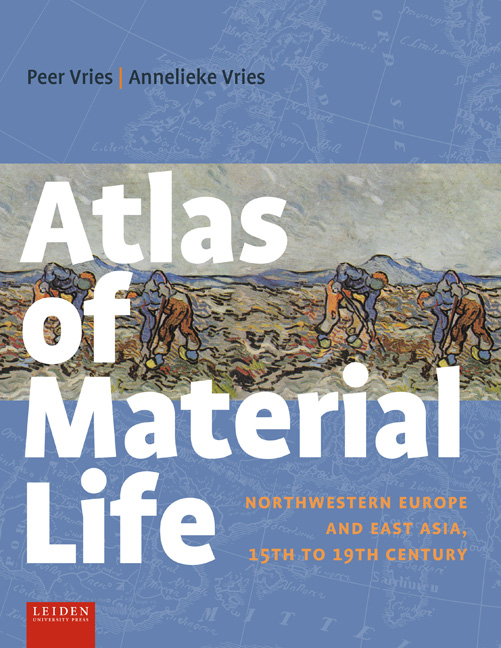Agriculture
Published online by Cambridge University Press: 19 December 2024
Summary
The agricultural labour force, the share of agriculture in GDP and urbanisation
The importance of agriculture in pre-industrial societies is clearly shown by the large share of the total labour force that was employed in it and by its large contribution to GDP. For the world as a whole that share was easily eighty per cent. Again, early modern Great Britain, with its very low percentage of labour input in the primary sector and its even lower contribution of this sector to GDP already before industrialisation, was rather exceptional. See Table 4-1.
In what is now the Netherlands, the economic importance of agriculture was for a long time even less prominent, as is shown in Table 4-2. But one has to realise that we are dealing here with a tiny country and that, after its ‘golden age’, there seems to have been a backlash in the sense that the share of agriculture in its total labour force slightly increased rather than decreased.
Even in Holland, the wealthiest and most dynamic part of the country, the role of agriculture was not further reduced during the eighteenth century, as can be deduced from Graph 4-1.
In both Great Britain and the Dutch Republic, the share of the primary sector, or just agriculture, in the labour force was higher than its share in GDP. That is normal. It was certainly the case also in China and Japan, even though we can give only very rough estimates for these countries. The share of agriculture in their labour force, to which we will confine ourselves here, is much more ‘normal’ for pre-industrial societies. The exact percentage for China is hard to estimate as the overwhelming majority of the people undoubtedly lived in the countryside but many of them were also engaged in non-agricultural activities. But to describe some eighty per cent of total population as ‘peasants’ will not be far off the mark. In Tokugawa Japan urbanisation was substantially higher and here too many people in the countryside, maybe even more than in China, combined agricultural activities and domestic industry. Its share of actual agricultural labour input in total labour input will have been closer to seventy or even sixty per cent.
- Type
- Chapter
- Information
- Atlas of Material LifeNorthwestern Europe and East Asia, Fifteenth to Nineteenth Century, pp. 105 - 130Publisher: Amsterdam University PressPrint publication year: 2020

